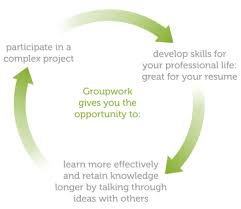Gamification for Learning
At EDUCAUSE, shared statistics:
- There are 1 billion gamers worldwide who spend at least an hour a day playing a game.
- Gallup engagement research in 2012 revealed that 71 percent of workers are not engaged.
- The lack of workforce non-engagement costs $300 billion annually in lost productivity, Gallup estimates.
- The longer children stay in school, the less engaged they become: 76 percent of elementary students are engaged, which drops to 61 percent in middle school and down to 44 percent in high school.
McGonigal said “Gamification in higher education is going to be a lot more than what you’re seeing today,”McGonigal shared three examples of new games now advancing a variety of fields of study, and offered hope that such techniques could be applied to revolutionize the ways through which higher education is delivered or assessed.
1. Foldit
The University of Washington’s Foldit game enables anyone to contribute to scientific research through virtual protein folding. The university’s game developers posit that human gamers’ propensity to not give up on a gaming task – resiliency – make them much more adept at solving complex protein structure prediction and design than supercomputers. And in some ways, they’ve already proven that to be so. Foldit game participants have been named in several published scientific journal articles, including one that describes how a protein structure could be solved and used in the treatment of HIV.
2. Urgent Evoke
The rich, interactive universe of Grand Theft Auto was the inspiration for this game, developed for The World Bank as a way to teach Sub-Sahara African youths to solve social problems in ways that also could provide a sustainable living. The platform is free and available online and can be used by schools to teach social entrepreneurship. A graphic novel serves as the game’s centerpiece, and players build out their gaming profiles as a comic or graphic novel might retell a superhero’s origin story. Participants complete projects in real life to solve real problems, such as securing a community’s food supply or establishing a sustainable power source, then progress through levels of the game. Those who successfully complete their 10-week missions ultimately earn certification from the World Bank Institute. In 2010, 50 student participants saw their entrepreneurship models funded by the World Bank, including Libraries Across Africa (now Librii), a franchise operating in Ghana.
3. Find the Future: The Game
Not all games must be played out in a virtual space. This game – developed by McGonigal with Natron Baxter and Playmatics – combines real-world missions with virtual clues and online collaboration, resulting in young people working together overnight in the New York Public Library to write and publish a book of personal essays about what they learned.
“The game is designed to empower young people to find their own futures by bringing them face-to-face with the writings and objects of people who made an extraordinary difference.”
Participants spend a night wandering throughout the library’s stacks and research materials, scanning QR codes to prove they found and interacted with the objects of their clues or missions. One 2011 participant, upon discovering the library’s early draft of the Declaration of Independence wrote an essay called a “Declaration of Interdependence.”http://www.edtechmagazine.com/higher/article/2013/10/awesome-power-gaming-higher-education
http://www.edtechmagazine.com/higher/article/2013/10/awesome-power-gaming-higher-education
Gamification, can be digital or non digital. It can be simple as applying a game as a method to teach in a classroom, role playing methods and to even a larger concept such as a virtual education environment. It can in some circumstances create immediate feedback for the learners, and then the learners can retry to understand and complete the task assigned. Gamification is not completely a concept that is recognized as the primary instructional method for education- however, I foresee the opportunities that can occur with this concept. Gamification will open up so many educational opportunities globally for all learners.
Military Simulator: http://www.reportlinker.com/p02015894-summary/The-Global-Military-Simulation-and-Virtual-Training-Market.html
Infographic: http://www.knewton.com/gamification-education/
Horizon Report 2014: http://www.nmc.org/pdf/2014-nmc-horizon-report-he-EN.pdf
Horizon Report 2015: http://www.nmc.org/publication/nmc-horizon-report-2015-higher-education-edition/






















The theme of this blog is critical thinking—and the kinds of puzzles that can be constructed around it. This term is used frequently in psychology and education. There are various definitions, but the one that best suits our purpose and which is, in the end, perhaps the best, is the ability to comprehend the logical connections among ideas, words, phrases, and concepts. In the relevant scientific literature, of course, the term is used much more broadly as a framework for understanding human cognition. But in my opinion, the best way to understand things is to construct puzzles to illustrate their basic essence.
Critical thinking involves skill at recognizing a pattern in given information, and especially recognizing how the information is connected to the real world. Here are a couple of very simple examples. First, consider the five words below:
Now, put them in order from the slowest to the fastest, when they are going at maximum speed. The solution, of course, is: 4-2-5-1-3. As with all such puzzles, there might be slightly different solutions—one could claim that some automobiles go faster than cruise ships. This “indeterminacy” characterizes this kind of thinking. However, some puzzles are straightforward. For instance, what do the following five things have in common?
The answer? These are all words referring to shades of blue.
The seven puzzles below are to the ones above, though hopefully more challenging. Some involve knowledge of facts, but critical thinking is still involved in such cases because the organization of the facts according to some principle is always involved—for example, a puzzle may ask you to put five items in order of their dates of invention.
The following tongue-in-cheek definition of critical thinking by Richard W. Paul, a leading expert on critical thinking theory, says it all: “Critical thinking is thinking about your thinking while you’re thinking in order to make your thinking better.”
I. What do the following 5 things have in common?
II. Put the following buildings or structures in order of height, from the shortest to the tallest.
III. What do the following animals have in common?
IV. Put the following inventions in order from earliest to most recent.
V. What feature do the following words have in common?
VI. Put these bodies of water in order in terms of volume, from smallest to largest.
VII. What do the following land masses have in common?
(Answers below.)
Answers